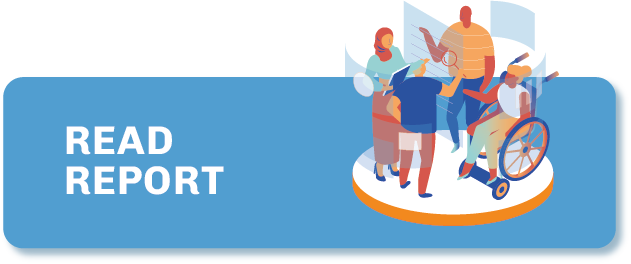Kosovo
In the last 10 years, Kosovo has experienced a boom in the launch of independent digital native media organisations. The entry of these publications into the market has changed Kosovo’s media landscape, through increased competition at a time when some traditional media outlets, mainly newspapers, have either closed down or switched from print to online. In spite of limited human and financial resources, digital media outlets are producing high-quality investigative journalism, especially on topics concerning organised crime and corruption, misuse of power and the violation of human rights.
Media organisations
in the Directory
TYPE OF COVERAGE

TYPE OF ORGANISATION

GENDER OF FOUNDERS

Press freedom
According to Reporters Without Borders, freedom of speech, protection of sources and the right to information are legally guaranteed in Kosovo. Still, media freedom groups and other organisations note that although defamation is decriminalised, strategic lawsuits against public participation (SLAPPs) pose a “serious threat” to media independence. Physical assaults are rare, but serious verbal and online threats have been documented by the Kosovo Journalists Association (AJK), with over 30 cases listed on its platform for 2022. No journalist has been killed in Kosovo for nearly two decades, notes Reporters Without Borders, but killings and disappearances before and after the war “have remained unpunished”.
Market structure and dominance
Kosovo has a pluralistic media market that is dominated by big media groups. However, due to the consequences of the Covid-19 pandemic, newspapers have ceased their print editions, although they are still publishing online. “Additionally, some broadcast media restructured to introduce major operational shifts, such as integrating print, online, and television newsrooms into one [single newsroom, thus] leading to staff layoffs,” according to the IREX Kosovo Vibrant Information Barometer 2021. New digital media outlets used this crisis to increase their presence and influence by offering new, quality products. This was also encouraged by Kosovo’s high level of internet penetration. According to the IREX report, telecommunications and internet infrastructure covers almost all of Kosovo. In this regard, compared to legacy media organisations, digital media outlets have made better use of the large social media presence of people in Kosovo, turning Facebook, Twitter, Instagram and TikTok into their most important channels for content distribution.
How media is funded
Traditional media organisations as well as new digital media outlets in Kosovo are mainly dependent on advertising and sales revenue coming from private companies and enterprises, although financing through grants by local and international organisations is increasing. The latter is the case especially for non-profit media outlets, mostly financed by international organisations, foundations and foreign government programmes, while the public broadcaster Radio Television of Kosovo (RTK) remains directly financed by the state.
According to IREX, although most media outlets faced a financial crisis due to the Covid-19 pandemic, new online and broadcast media organisations continue to emerge. These outlets have diversified the broadcast and digital media sectors in particular. According to the European Commission’s Kosovo Report 2022, a lack of financial self-sustainability leaves the media sector, including the public broadcaster, vulnerable to political and business interests.
Fourteen profiles of digital native media organisations from Kosovo are included in the directory. More than 90% of their founders are men; the presence of women in upper management remains at a very low level. These new digital media outlets are mainly founded by journalists, and operate with limited human and financial capacities, with their number of employees ranging from five to 20. The included outlets focus mainly on politics, crime, corruption and human rights.
Since Kosovo has a high level of internet penetration, digital native media outlets are very focused on distributing content through social networks, mainly Facebook, Instagram, Twitter and TikTok. They rarely use other platforms such as newsletters, WhatsApp or other communication platforms to share their content. These media outlets are mainly focused on video production, as it is seen as a good way to increase revenue by signing new sponsorship contracts or by monetising content on platforms such as YouTube and those owned by Meta.
More than 90% of the interviewed organisations list advertising as their main source of funding. Such dependence on advertising has had a negative impact on media sustainability, especially during and after the Covid-19 pandemic and its subsequent economic crisis, with many businesses terminating advertising contracts and media outlets left without their main source of revenue. Another important source of revenue is the monetisation of content on platforms such as YouTube and those owned by Meta. In this regard, another joint challenge for all media outlets producing content in Albanian is the fact that Google AdSense does not support the Albanian language.
Although they are still in a stage of development, digital native media organisations in Kosovo have managed to compete with traditional media outlets in terms of providing fast and accurate information, as well as in the publication of investigative stories on important topics concerning politics, the economy and human rights. However, they face the common challenge of sustainability, both in terms of finances and staff. Lack of sustainability hinders growth, improvement of professional standards and also affects investment in innovation.
Last updated: December 2022
CREDIT FOR STATISTICS: Press Freedom statistics, RSF Press Freedom Index 2022; Internet penetration and population statistics, from Internet World Stats

